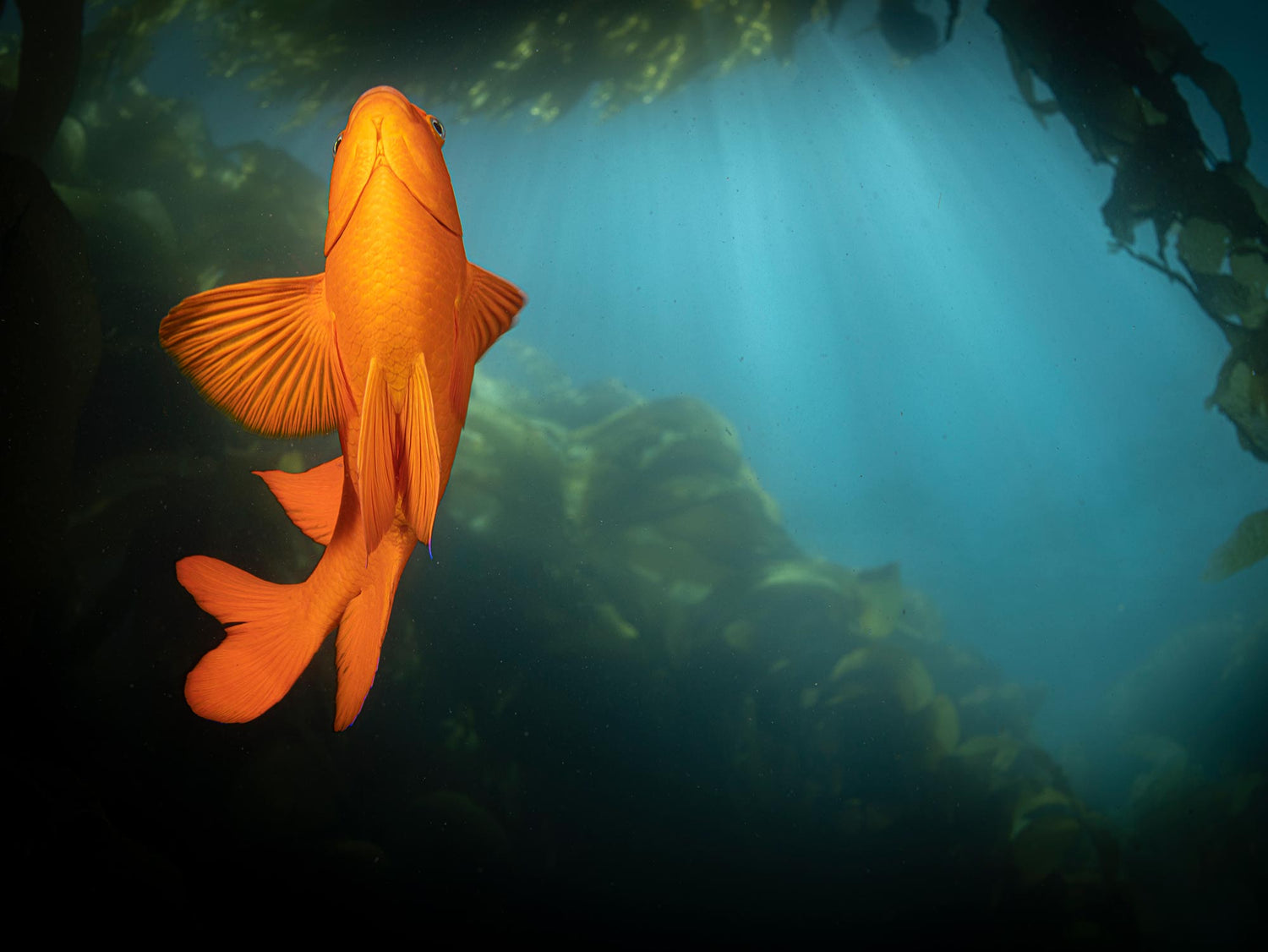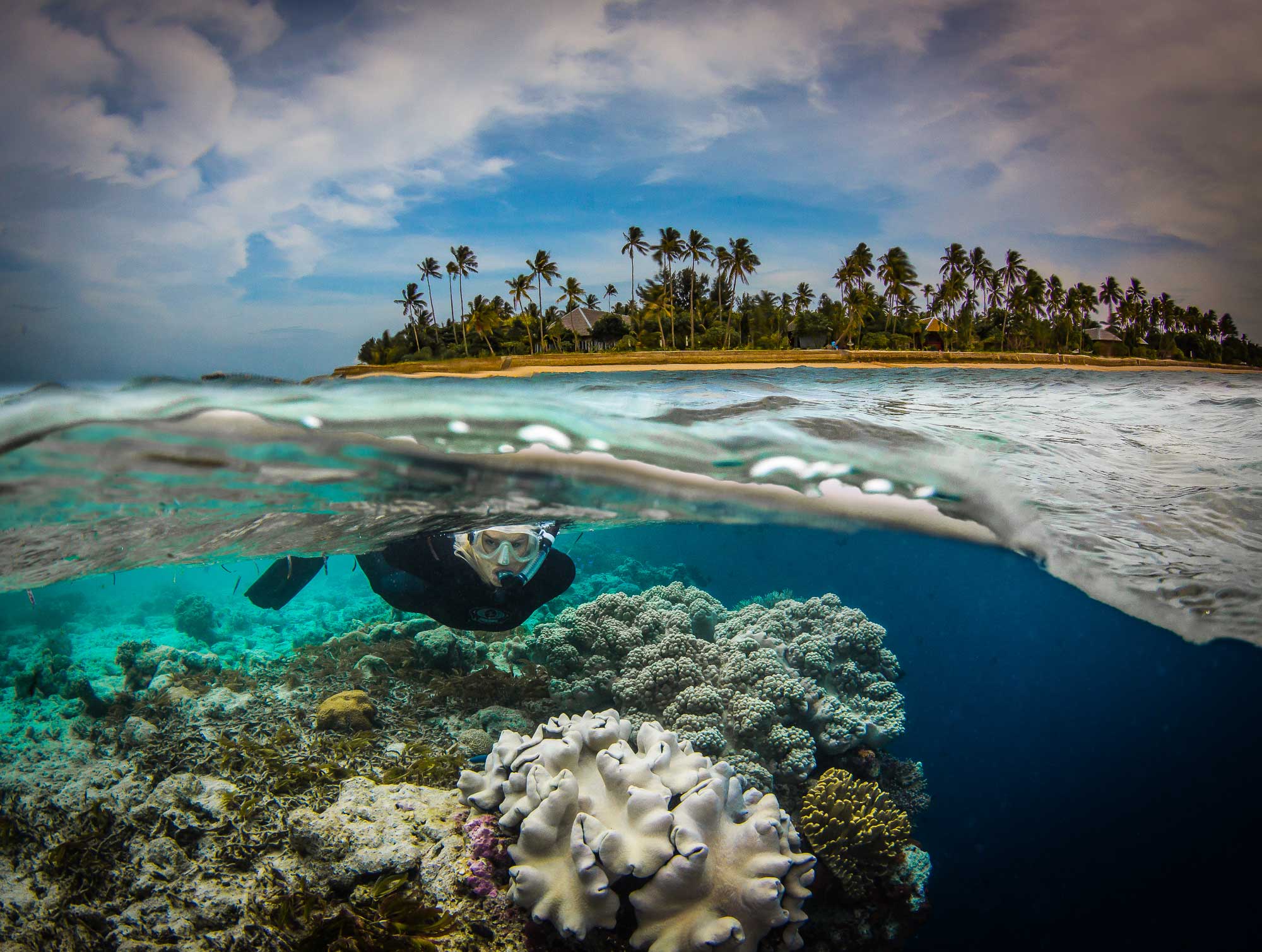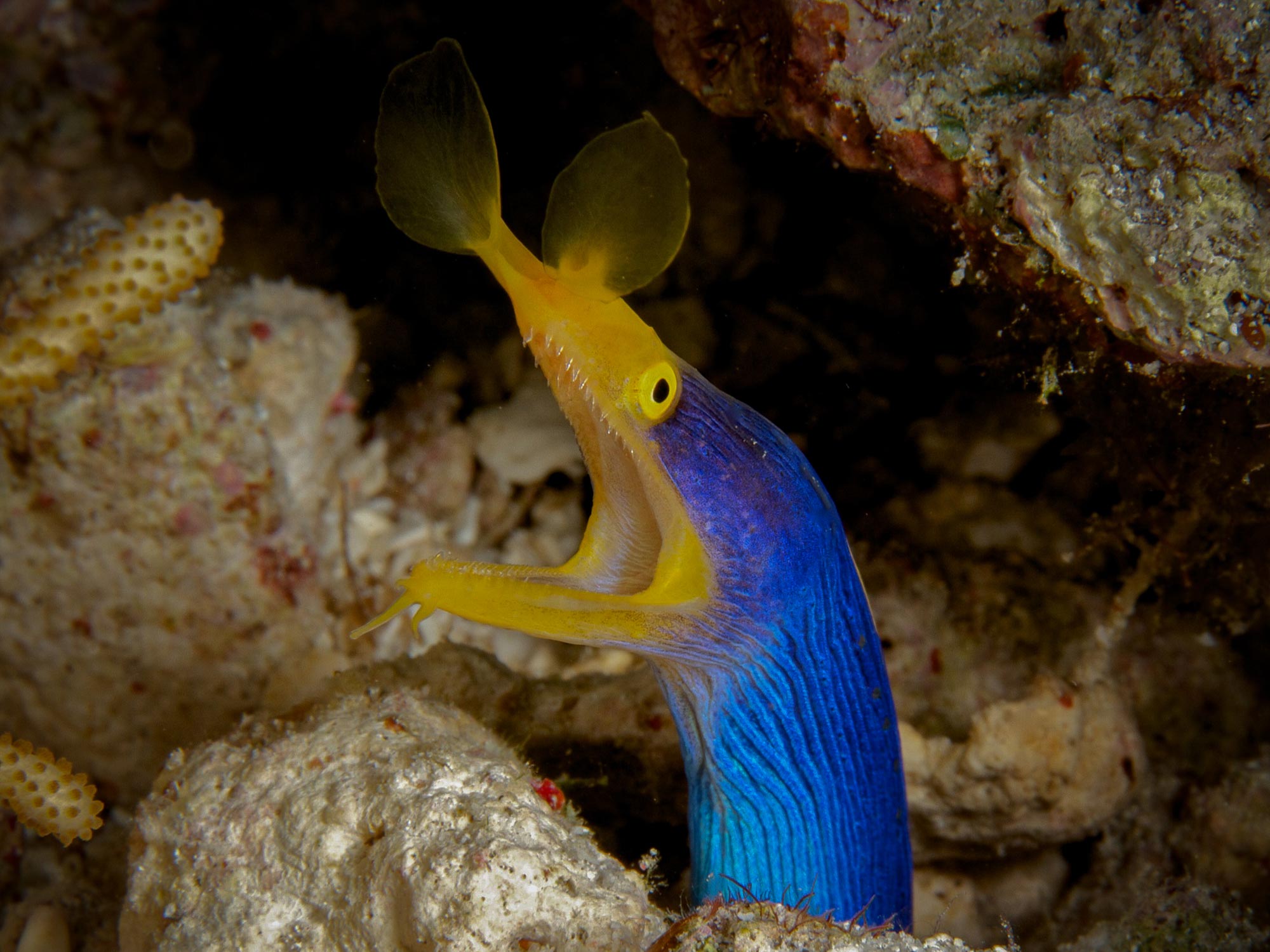Where
Temperate waters of the California coast, from Monterey Bay to the southern end of Baja, California.
DSLR + Mirrorless
Mode: Manual is preferred, but if you are shooting natural light then Program or AV, TV etc. can work well. We like to make our first base exposure for the water column with an upward angle, without the sun in the frame.
ISO: 200-800 depending on the clarity of the water and the brightness of the sun that day. Kelp diving can be in very clear water on the right day, or it can be very dark. Use your ISO for this baseline - If the conditions are dark due to depth, clarity, or lack of sun, raise your ISO to the point of an acceptable shutter speed. If you are up in the canopy with light rays dancing around, shoot a low ISO, ideally 200.
Aperture: F-8 to F-22 depending on light and your camera angle (even wider on dark days or deeper dives). If you are using a super wide lens, the depth of field will be vast, even with your lens opened up. With a kit lens or portrait lens you can stop down to darken the background for effect. There will be plenty of contrast from the bright orange, regardless of your choice of backgrounds.
Shutter speed: Using flash will stop the action for you, so use the synch speeds from 1/125th to 1/160th second. If you are shooting natural light try to keep the shutter speed higher to prevent motion blur - 1/500th second, provided there is enough light.
Lens: Garibaldi are large as subjects, any lens will work. A macro lens will yield very tight shots from a comfortable distance, a super wide lens can make stunning panoramas if you can get close enough to fill most of the frame with the Garibaldi. These animals are an excellent choice for any kit lens. Zooming from 18mm to 55mm will allow you do do face shots, scenics, and work with the fish all at a comfortable distance.

1/160 • f/10 • ISO 100 © 2022 Gary Burns
Point and Shoot
Mode: Full Auto or Program will work particularly well, due to the color contrast you have with Garibaldi. If you shoot manual exposure, remember that you won't need as much flash as you would typically need for a dark colored or camouflaged fish.
ISO: 200-400 for shallow, 600-800 deeper or darker.
Aperture: F-8 to start, but virtually any aperture will work if the ISO and shutter speed are balanced against this.
Shutter speed: From 1/60th second to 1/250th second (flash synch for your camera), a flash really help these images since ambient light will be strong.
Lens: Zooming through almost the entire range of focal lengths can be fun with Garibaldi, experiment with tight and wide shots.
Technique
Garibaldi are not particularly shy, but they will only get so close. Their unusually bright coloration will make them stand out even at distances that normally mute out color and contrast. You can fill the frame with them for impact, or wait for them to move into a position that compliments the surrounding environment. If you want them larger in the frame with a wide lens, try holding the camera out from your body and shoot, then check and shoot again.
Strobes
Move your strobes around to create harsh shadows for rich blacks, side light, or light from above. Backlit kelp fronds can glow. TTL will power up the strobes to match the sun once you have set a manual exposure on the camera for the ambient light.
Pro Tip
Most fish will blend in with their background, until lit up by the flash. Garibaldi look as if they have been lit up by a flash even when none are used. This color contrast can be used to your advantage for compositing, as they make an easy mask. If you are using wider focal lengths, and the water is turbid, consider turning off your flash (or pointing them away) you don't need it to make the colors pop, and if there is scatter in the water the flash can make this worse.

1/200 • f/11 • ISO 100 © 2022 Gary Burns
Want the easy way to improve your underwater photography? Sign up for our weekly newsletter for articles and videos directly in your inbox every Friday:
Additional Reading
Kelp Forest Underwater Camera Settings and Technique
Diving Catalina Island with the Canon R5 and R6 [VIDEO]
Natural Light Photography Underwater
Wide Angle Fisheye to Macro on the Same Dive with the Olympus Tough TG-6













